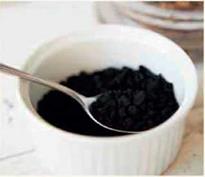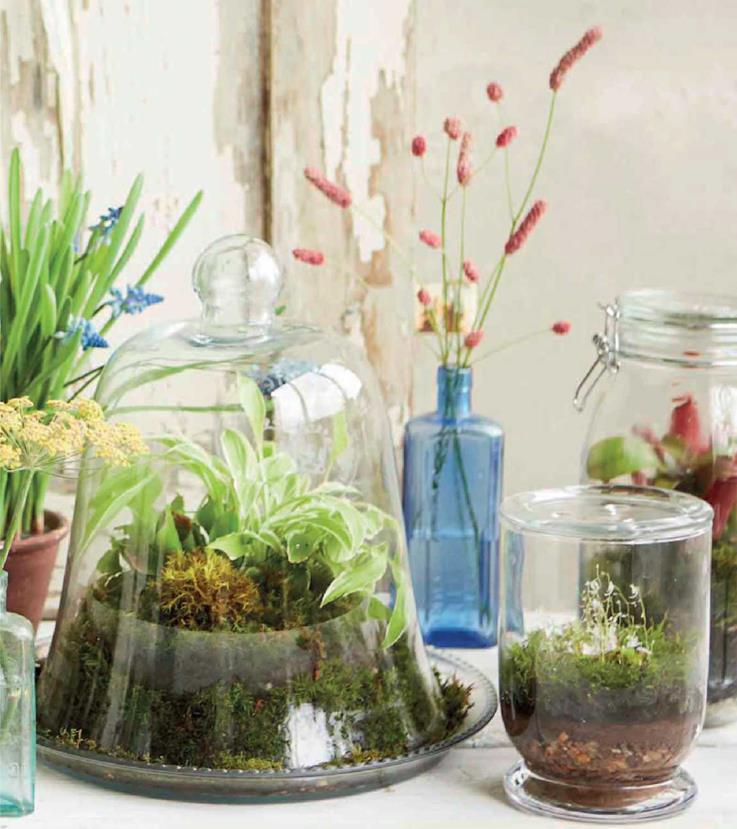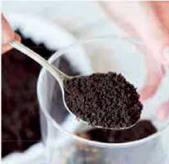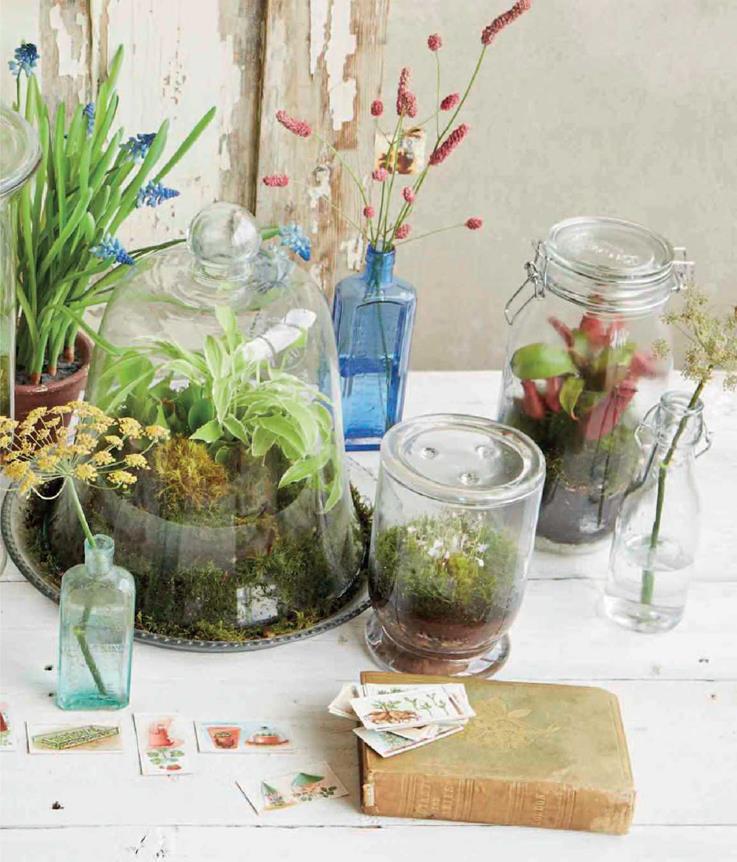A mini garden encased in glass, a terrarium makes an eye-catching display and is the perfect choice if you lack space and time for a real garden. It is easy to look after, so even better if you lack a green thumb.
■ TIME IT RIGHT Plant in spring or summer
when plants are actively growing. Plants should last 2-3 years without needing to be transferred to a larger container and can be kept smaller by pruning.
|
|
|
2 |
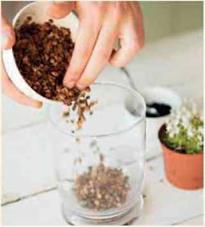
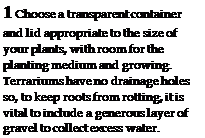 Use a spoon to sprinkle a thin layer of activated carbon granules (available from aquatic suppliers) over the gravel. This will help to keep the container smelling sweet by filtering out impurities. Wash the carbon granules first to remove any residue.
Use a spoon to sprinkle a thin layer of activated carbon granules (available from aquatic suppliers) over the gravel. This will help to keep the container smelling sweet by filtering out impurities. Wash the carbon granules first to remove any residue.
|
|
Project Steps
|
|
|
3 |
Next, add some planting medium. What you put in depends on the plants you choose, but a peat-like potting mix that retains moisture and allows drainage is a good choice. Add a layer of the potting mix and lightly pat down with a dibber, chopstick, or pencil.
V
RANTING VFS
Choose plants that Witt remain small and prefer low light and high humidity. Ferns, dwarf hostas, bog plants, carnivorous and tropical plants are good choices. Avoid succulents and cacti since they prefer a drier, sunnier environment.
|
3 |
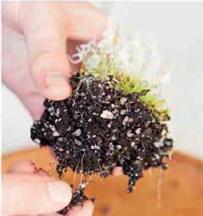
![]()
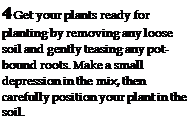
 |
Add more potting mix around the sides of the plant, gently tapping it into position with a dibber, chopstick, or pencil. Make sure that there is enough soil for roots to continue growing before going on to the next step.
|
6 |

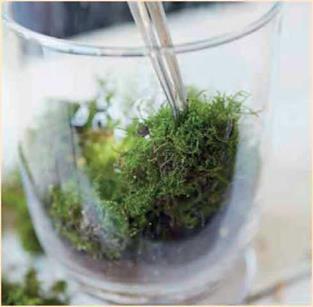 |
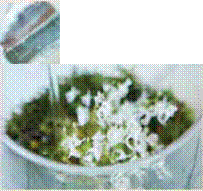 |
Fill in around the plants with moss using tweezers. You can also add items from nature, such as twigs, driftwood, stones, pebbles, or shells to create a mini landscape scene in the terrarium.
![]()
![]()


![]()
Where to site You must place your terrarium out of direct sunlight, so don’t choose a sunny windowsill. The plants need low light, but enough to be able to grow without becoming straggly.
‘Watering The key to a terrari um is that it is self-sufficient. Plants form condensation in the enclosed environment, water drips down the sides and they water themselves. If the condensation stops or the soil looks dry, water plants by using a meat baster or misting the inside. Don’t overwater, especially in winter. Tropical or carnivorous plants need a bit more water, preferring rainwater, and while they do not enjoy being soggy they must
always be wet, so maintain the water level at 2in (5cm) below the surface of the soil. Add more sand to the planting medium for these plants, too.
General care Air the terrarium every 2-3 weeks for a few hours, especially in the spring and summer. If you’ve chosen the right plants and the right container size to match, the terrarium will keep going for a while without needing replacement plants. You can keep plants in shape by pruning; make sure you remove any trimmed foliage and any plant that begins to rot. Plants rot because of too much moisture, so you will need to correct the balance by opening the lid more frequently. The soil can be refreshed after some time by scraping off the surface and replacing it with fresh potting mix.
/
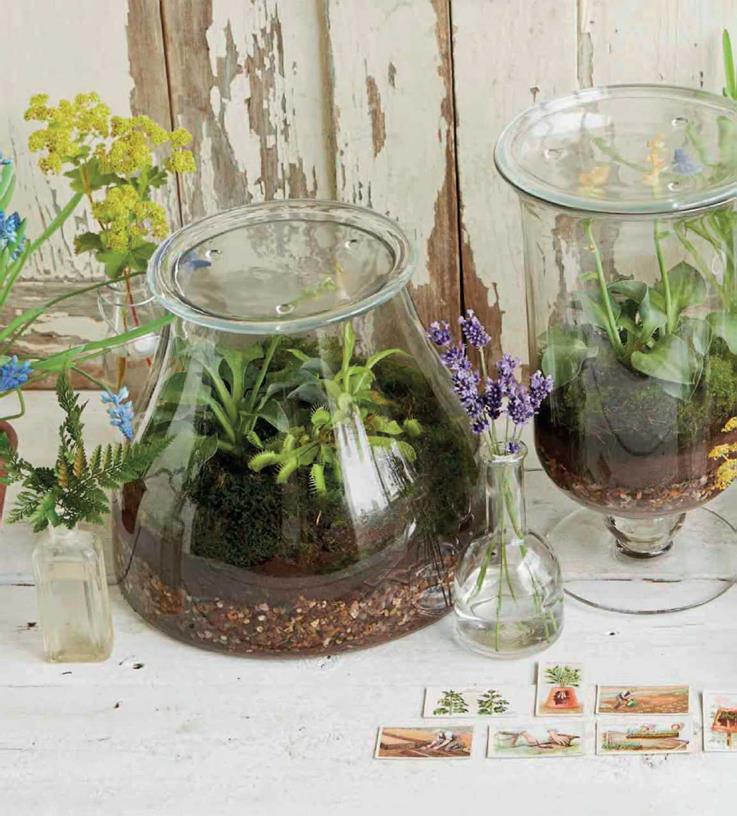 Terrariums were originally used by Victorian plant hunters to transport their living specimens thousands of miles home
Terrariums were originally used by Victorian plant hunters to transport their living specimens thousands of miles home
|
|

